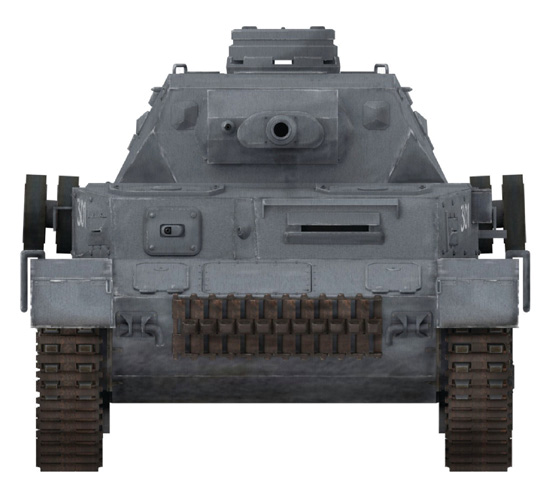
Colour Plates
At the start of the Second World War German military vehicles were painted in a twotone scheme using dark grey (dunkel grau) and dark brown (dunkel braun). Irregular patches of the brown were added to break up the factory grey base coat. In mid-1940 the brown was discontinued. In Europe after the Polish campaign most panzers were grey with a white Balkenkreuz (Balkan Cross) with a black centre. Vehicles shipped to North Africa were painted dark yellow or salmon sand, over which was sometimes added a vague hint of camouflage using darker colours.
German Army Memorandum No.181, issued in February 1943, decreed that the basic overall colour for all military vehicles be a deep sand-yellow (dunkel gelb). From this point all vehicles were sprayed this colour, which superseded the previous panzer grey, before leaving the factory. This led to an enormous range of camouflage patterns being employed on the Eastern and Western Fronts as well as in Italy, using two other colours, olive green (oliv grun) and a red-brown (rotbraun) either together or singularly. During the winter on the Eastern and Western Fronts Panzer IVs were snow-camouflaged with varying degrees of success using a whitewash finish.
Panzer IVs, in common with other German military vehicles, normally had up to four types of marking that identified their unit of origin and role. These consisted of national, divisional, tactical and personal markings. The most readily recognizable was the Balkenkreuz, which went through a number of variations as the war progressed.
The cross was usually located on the sides of the superstructure and the tactical number painted onto the turret sides or on the sides of the turret spaced armour (which formed part of the Schürzen: it always lasted longer than the skirt plates which were damaged or torn off whilst the tank was manoeuvring). In Normandy Panzer IVs were photographed with the cross on the forward sides and rear of the turret spaced armour. The three-digit number painted on the turret, usually in black or red lined in white, indicated, left to right, the company number, troop number and lastly the vehicle number.
AUSF D

This Ausf D is finished in the early war standard panzer grey, which in many black and white and colour photographs is very dark and looks almost black. Panzer IVs fought in the initial campaigns on the Western and Eastern Fronts in this colour.
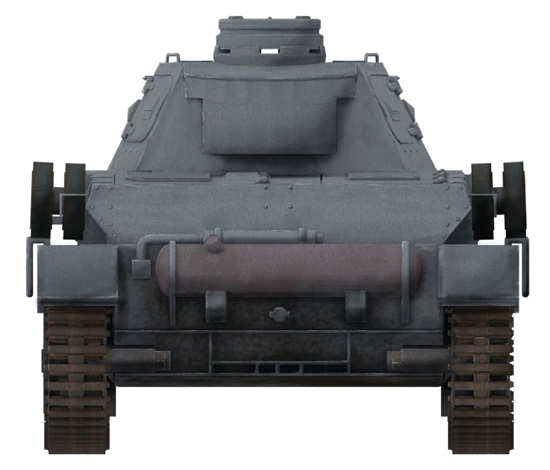
AUSF D
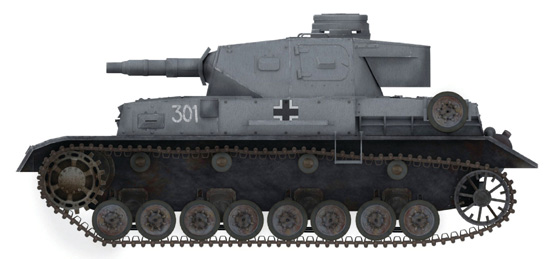
This tank has the Balkenkreuz in black with white outline and the white tactical number 301 on the hull. The side and rear armour was increased from 15mm on the earlier models to 20mm.
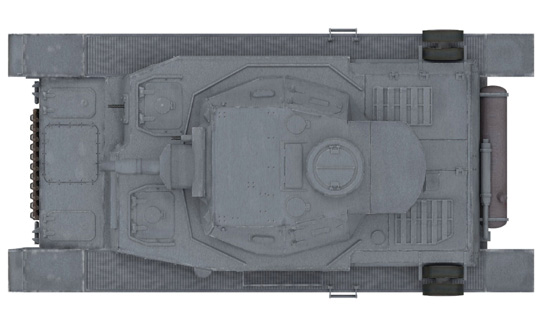
The Ausf D, like the earlier A model, had a distinctive forward-set driver’s position visible here from the top view.
AUSF E
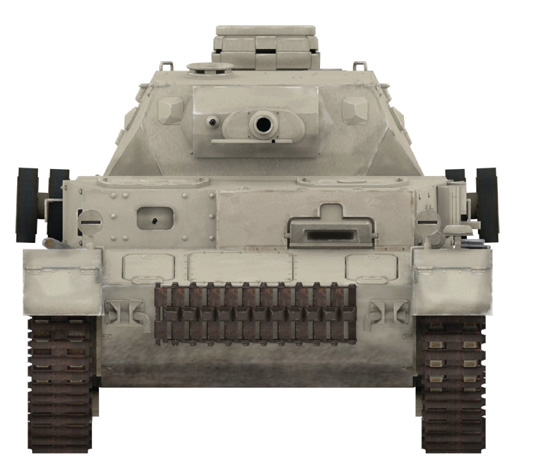
The similar-looking Ausf E turret had a redesigned cupola and an exhaust fan vent forward to the right to expel gun fumes. Also the glacis hatches were countersunk level with the glacis plate.
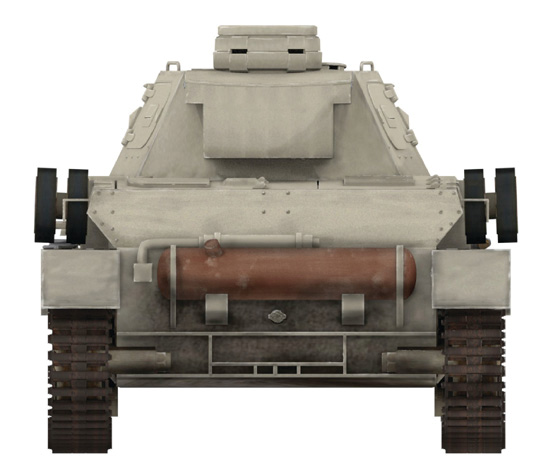
AUSF E
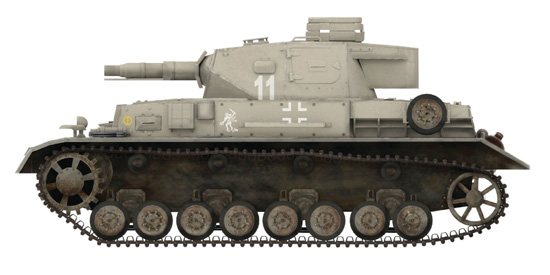
The tank bears the insignia of the 11th Panzer Division which was formed in August 1940. It fought in the Balkans, Russia and France.
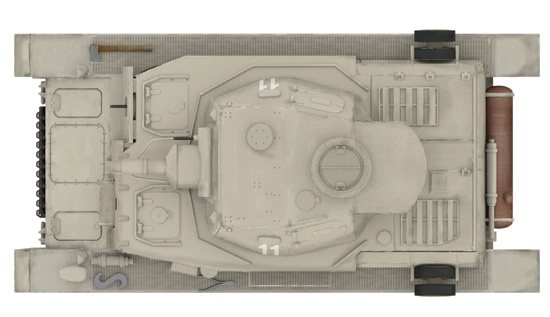
This particular example is finished in dunkel gelb, indicating it had been sent back to the factory for refurbishment.
AUSF F2
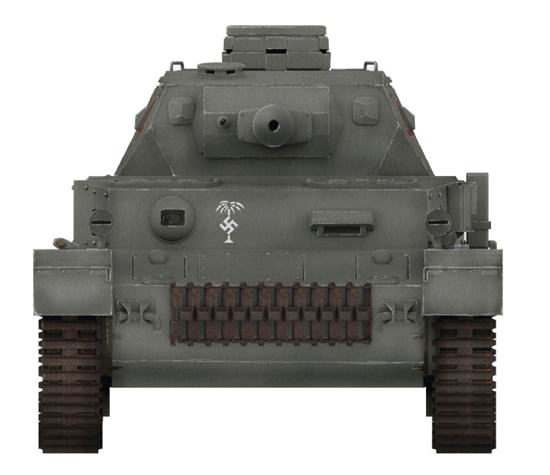
This is the upgunned version of the Mk IV armed with the powerful 75mm KwK40 L/43 anti-tank gun, which the British dubbed the ‘Pz IV Special.’ Bearing the tactical number ‘444’ this F2 belonging to the 21st Panzer Division was photographed in North Africa in 1942. The original image indicates a quite dark base colour. The Afrika Korps swastika and palm tree insignia appeared in a number of slightly different variations.
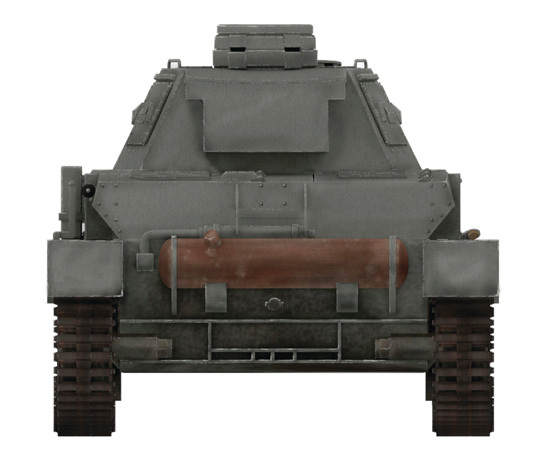
AUSF F2
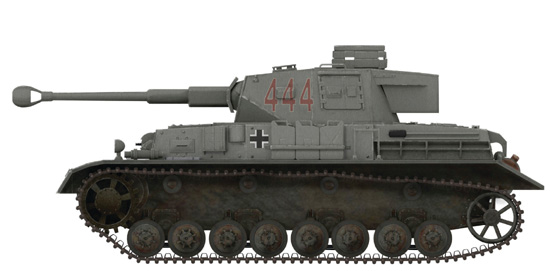
Side-on, the F2’s gun had a very distinctive circular muzzle brake that made it easy to distinguish from subsequent versions. Also note the ubiquitous Jerry cans that were carried in racks on the sides and at the rear. On some models these side racks were replaced by a bracket for two spare wheels, that also served to up-armour the sides of the fighting compartment.
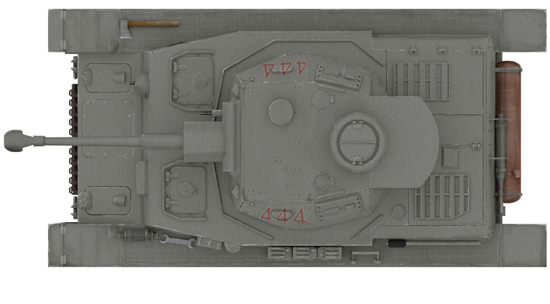
The dunkel gelb has either faded with the weather, dirt and dust or was toned down by the crew for operations in Tunisia during the winter months. Some German vehicles in Libya and Tunisia had a two-tone camouflage pattern. When applied in North Africa the Balkenkreuz was solid white with a black outline or was simply just a white outline.
AUSF G
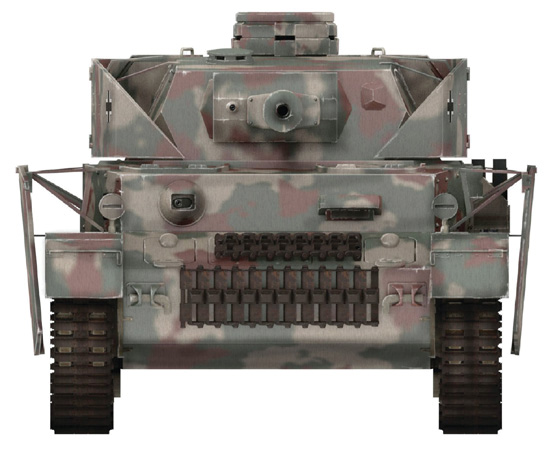
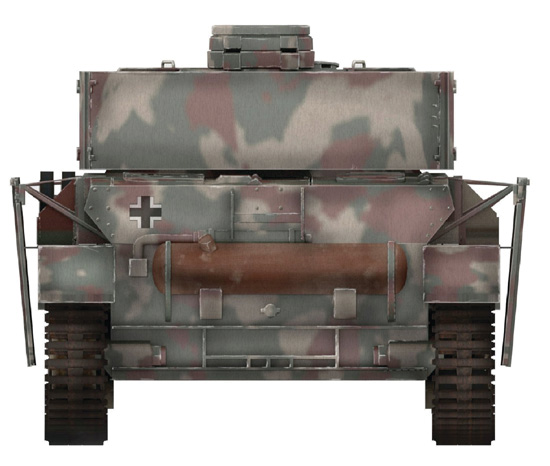
This formidable-looking Ausf G is fitted with Schürzen on both the turret and hull sides. It is finished in the three-tone camouflage used by the panzers in Normandy during the summer of 1944. The basic dunkel gelb coating has been oversprayed with very irregular patches of oliv grun and rotbraun. Mud and foliage also served to disrupt the outline of the panzers.
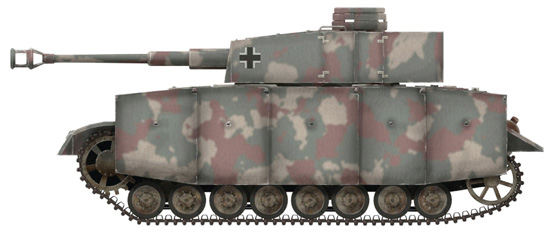
This Ausf G sports the German national cross but lacks a tactical number which was normally applied to the forward edge of the turret Schürzen. Photographic evidence suggests this omission was quite common in the later stages of the war.
AUSF G
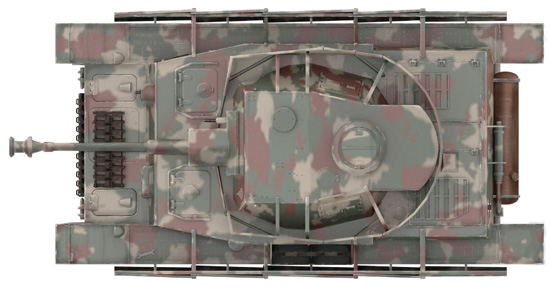
This top view shows just how effective the Normandy camouflage was from the air: this was vital in light of the threat posed by Allied fighter-bombers.